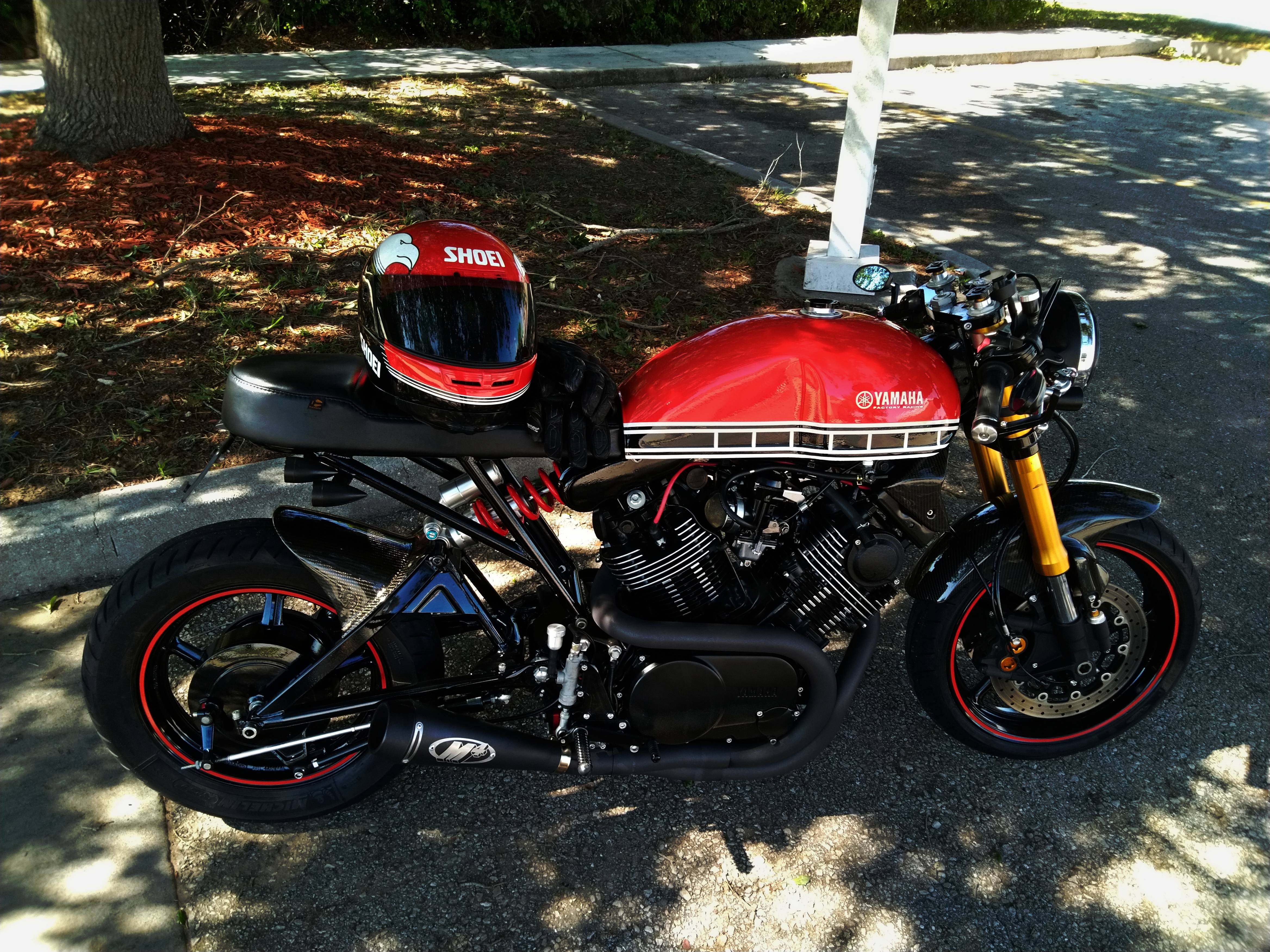What makes you think it was the Virago that caused the Tariff, and not the OTHER big Japanese makers 750's? Honda most notibly had some GREAT 750's in that era, the 750 Magna, 750 Shadow and the 750 Nighthawk for example, all later released as 700 cc models to get under the tariff. The Suzuki GS750E turned into a GS700E and the KZ750 turned into the KZ700 also and I'm sure there were others. All better bikes than the Virago IMHO.
The Virago competed directly with Harley Davidson over the Vtwin design. Harley was feeling the pressure from the Big 4 years before the Virago, but the Virago pushed them over the top.
From an article about the tariffs,
https://www.revzilla.com/common-tread/motorcycle-tariffs-and-harley-davidson
Between 1973 and 1980, Harley’s North American market share of heavyweight motorcycles slid from 75 percent to 25 percent, according to the Organisation for Economic Co-operation and Development. A recession brewed in the late 1970s. Unemployment ran to almost 8 percent for much of this time. In an effort to combat inflation, the Federal Reserve raised the federal funds rate. Interest rates hit 20 percent so borrowing money was expensive. Motorcycles, being a luxury good in the United States, were not moving from sales floors. In 1980, H-D posted its first operating loss in half a century — and things were rapidly getting worse. In 1982, a group of 13 Harley employees bought the company back from AMF. However, to do so, they were highly leveraged. To say the company was cash-strapped would be a grave understatement. Given the huge sales slide they had suffered, the ITC’s “no injury” claim seemed spurious. Harley again requested federal assistance in 1982, this time citing Article XIX of the General Agreement on Tariffs and Trade of 1974, better known as “the escape clause.” Effectively, Article XIX permits a nation to temporarily take emergency action against rapid increases in imports if they’re injuring an industry domestically. This is a nearly universally controversial clause due to the different interpretations of the clause, in part due to confusion over definitions.
From another article,
https://www.motorcyclecruiser.com/motorcycle-history-lesson/
The problem was that these bikes, with the exception of the H-D line, were often perceived as little more than gussied-up standard models, modified with bolt-on pieces. That would change when Yamaha introduced the first designed-from-scratch factory custom, the 1981 XV750 Virago. The Virago line, which in its time encompassed a range of bikes from 250 to 1100cc, was important for several reasons, but mainly because Yamaha, by then the leading producer of metric customs, was the first Japanese factory with the audacity to build a traditional American-styled V-twin custom.
Building a V-twin wasn’t something anyone, especially Yamaha’s Japanese cohorts, took lightly. The rest of the Big Four didn’t want to be seen as Harley-Davidson imitators, a charge leveled at Yamaha, and they weren’t sure how their traditional customers would react to an Asian interpretation of the time-honored American V-twin design. Because they weren’t sure what to build, the Japanese hedged their bets and built a little bit of everything. In 1981, you could buy an import factory custom (the term “cruiser” still hadn’t caught on) equipped with a V-twin, a parallel twin, a transverse V-twin or a single-cylinder powerplant as well as a UJM (Universal Japanese Motorcycle) transverse four. It was a confusing time for the industry, and things were about to get worse.
I was gonna stop the article here, but I had to follow up a couple more paragraphs to this article....
The problem was that the motorcycle business was about to enter an economic tailspin, one that would take a tariff court and several long, lean years to recover from. Until things sorted themselves out, neither the motorcycle business nor the motorcycles themselves offered much in the way of excitement.
One of the few bright spots occurred in 1985, when Yamaha introduced what was arguably the first real “power cruiser,” the 1200cc V-Max. Certainly there had been big, fast cruisers in the past, the seminal LTD 900 and the Honda V-65 Magna, to name two. But neither was as exhilarating to ride, as righteous looking or as mind blowing as Mad-Max. Two decades later, he’s still a force to be reckoned with.
Final article.....
https://www.jsonline.com/story/mone...an-protected-company-foreign-bikes/742273002/
In 1983, the company was reeling from an onslaught of Japanese motorcycles cruising down American roadways.
Reagan’s action was considered unusual for an administration committed to free trade, according to articles at the time from The Milwaukee Journal.
Harley had spent months pressing Washington for help, saying it lost money in 1981 and 1982, the first losses in the company’s 80-year history. Harley laid off 1,600 workers — 40 percent of its workforce — in 1982.
Now, like I said, Harley was reeling LONG before the Virago from the Jap bikes. 1981, the Virago hit American shores and Harley just lost it. VTwin cruiser territory was a direct threat to them. While I can no longer find the article that says it directly, I hope I pointed you in the right direction with as accurate(as I can find at the moment) information regarding your question.























![Bovemanx Motorcycle Phone Mount Holder, [150mph Wind Anti-Shake][7.2inch Big Phone Friendly] Bike Phone Holder, Motorcycle Handlebar Cell Phone Clamp, Compatible with iPhone 16 Pro Max Smartphones](https://m.media-amazon.com/images/I/51F+1sontPL._SL500_.jpg)



















![JOYROOM Motorcycle Phone Mount, [1s Auto Lock][100mph Military Anti-Shake] Bike Phone Holder for Bicycle, [10s Quick Install] Handlebar Phone Mount, Compatible with iPhone, Samsung, All Cell Phone](https://m.media-amazon.com/images/I/5113ZNM8R8L._SL500_.jpg)



